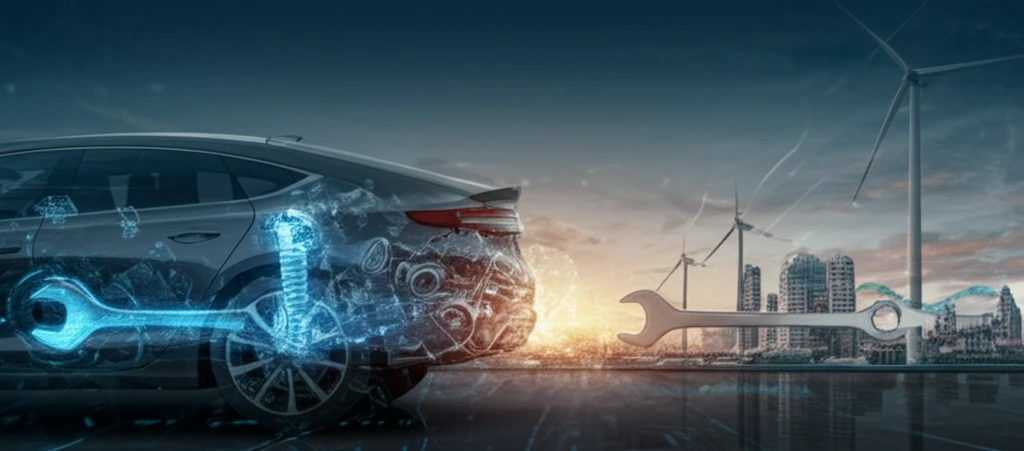
Power Trip: How Torque-Based Engine Management is Revolutionizing Electric Vehicles
"Unlock the potential of range extender engines with innovative torque management strategies, enhancing efficiency and comfort in electric vehicles."
The electric vehicle (EV) revolution is charging ahead, but range anxiety and lengthy recharge times remain significant hurdles. Enter the range extender (RE), a compact engine-generator combo that provides on-demand battery charging, effectively extending the EV's operational range. But how do you ensure this RE operates optimally, providing the necessary power efficiently and smoothly? The answer lies in sophisticated engine management systems (EMS), and torque-based systems are emerging as a frontrunner.
Conventional engine management often relies on a speed-density approach, which calculates air intake based on sensor readings to determine fuel injection. However, torque-based EMS offers a more direct and coordinated method. It translates power demands into precise torque commands, adjusting throttle angle and spark timing to meet those demands. This approach allows for finer control and better integration with the overall vehicle management system.
This article explores the development and advantages of torque-based EMS for range extender engines, focusing on a research project that implemented such a system on a 125cc semi-direct injection LPG engine. We will delve into the system's architecture, control strategies, and experimental results, revealing how this technology contributes to improved fuel economy, reduced emissions, and a more comfortable ride.
The Architecture of Torque-Based Engine Management

At the heart of a torque-based EMS is the ability to translate power requirements into precise torque commands. This process begins with the vehicle's power management strategy, which assesses battery state of charge (SOC) and driver demands to determine the necessary charging power. This power demand is then converted into specific torque and rotational speed targets for the RE engine. The EMS then takes over, coordinating various engine control parameters to achieve the desired torque output.
- Centrally coordinated torque management
- Centrally coordinated air-fuel (A/F) management
- Aided calculations for EMS by physical models
The Future of Range Extender Technology
Torque-based engine management systems represent a significant step forward in optimizing the performance and efficiency of range extender engines in electric vehicles. By providing precise control over torque output, these systems enable better fuel economy, reduced emissions, and a smoother driving experience. As EV technology continues to evolve, torque-based EMS will likely play an increasingly important role in extending the range and practicality of electric vehicles, bridging the gap between pure electric and traditional combustion engine powertrains.
